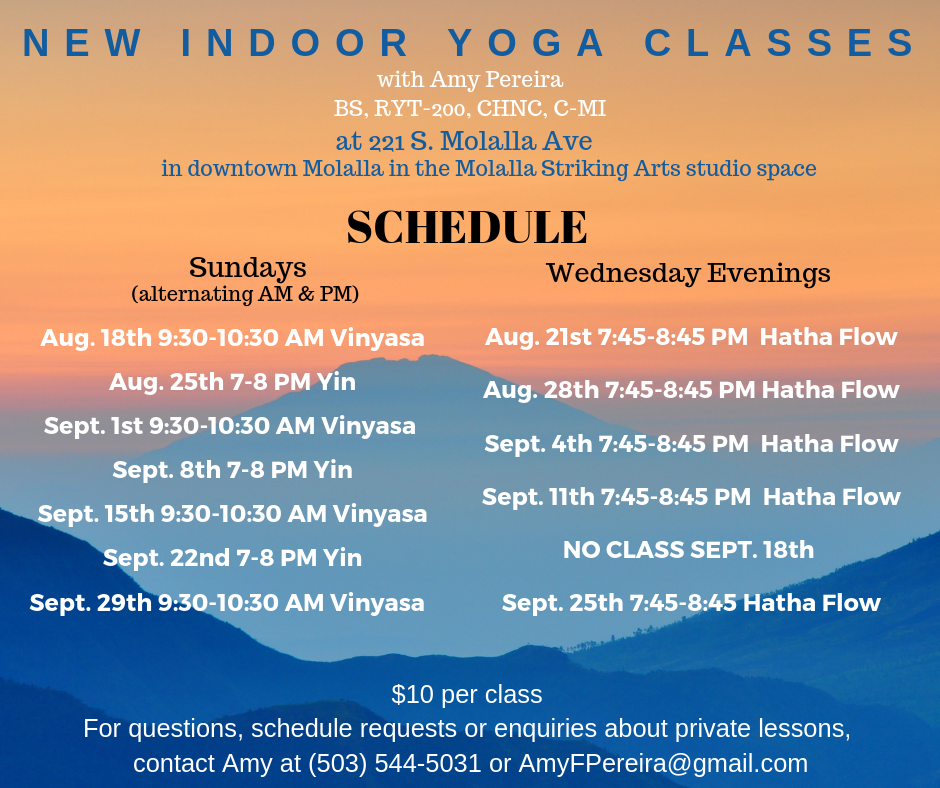|
Yoga is frequently defined as a posture-based fitness and stress management/relaxation regimen. Its mere mention seems to most often conjure images of bodies on mats contorting themselves into various shapes but yoga actually consists of so much more than just a physical practice.
It can be seen as a form of moving meditation and as a way of training the body and mind to be still. It can be practiced to aid its practitioners into living a graceful and centered life with ease in one's own skin. In fact, images of poses were depicted on ancient tablets from the Indus Valley and indicate that the practice of performing yoga asanas (also thought of as poses or shapes) was in effect over 5,500 years ago as vital part of a system of philosophies, world views, and teachings that emerged in ancient India to help one better oneself, physically mentally and spiritually. While the full scope, meaning and magnitude of yoga is far greater than this blog post will reach, many still seek to understand the difference between the various "styles" of yoga in relation to which class is best for them. In order to best understand what the class you are interested in taking holds in store for you, it is typically best to contact the specific teacher who will be leading the class- as each yoga teacher will have his or her unique teaching style. Knowing that that your teacher has your needs in mind and is a good fit for you is a great first place to begin and he ir she should also be able to direct you to a yoga class that is best for you. That said, here is a short little synopsis of some of the many more popular styles of yoga that may be offered in a city or town near you! Hatha- Generally a gentle class with a focus on static poses that subtly stretch and strengthen. Hatha can deliver both physical activity and opportunity for releasing tension and can be great for both those new to yoga & those already well on their way! Vinyasa- This type of class typically supports strength, flexibility & more by gently flowing from one pose to another while linking/coordinating breath to movement. A dynamic and rhythmic class that may serve as a moving meditation. Power Vinyasa- A generaly more demanding and vigorous version of the above that may involve more repetitions, a faster pace and advanced modifications or options/opportunitites. Slow Flow Vinyasa- A somewhat slower-paced version of a standard Vinyasa, this style of class is good for those new to yoga but interested in trying Vinyasa (and it's Sun Salutations) in a way that may allow for greater opportunity for a bit more personal instruction or gentle exploration into Vinyasa. Yin- Supports flexibility & circulation of connective tissue of joints through seated poses which are held for longer durations- great for those who think they're not flexible but are open to becoming more so! Iyengar- Developed by B.K.S. Iyengar, this style of Yoga places emphasis on detail, precision and alignment in the performance of posture and breath control. Often involves holding poses for longer durations to build heat in and strengthen the muscles and to support ability to support reaching targeted alignment goals. Hot Yoga- Typically refers to any yoga class (e.g. Bikram, CorePower, Modo etc.) which is practiced in a room that's heated anywhere from ~95 to ~105 degrees Fahrenheit. Good for those interested in working up a profuse sweat. This style is not advised during pregnancy as it may exessvely raise the body temperature. May also be contraindicated with certain health conditions, so it is suggested that individuals consult with their doctor/health care provider to discuss whether this style is appropriate for them. Kundalini- Yoga which practices various poses but often emphasizes series or rapid repetitions of deep inhalations and exhalations. Aims to awaken the Kundalini energy that is believed to reside at the base of the spine and to allow it to travel up the spine and engage involvement and movement of the 7 energy centers or chakras that also are believed to reside along the spine from the base of the spine through the crown of the head. Ashtanga-Most often involves a continuous, increasingly challenging series of poses and coordinated breathwork to produce much heat within the body and profuse perspiration which is believed to help lighten and purify the body. Like Vinyasa, it includes Sun Salutations but Ashtanga is typically more structured than Vinyasa and extends well beyond physical postures. While the study of yoga's historical roots and purpose is nearly limitless and while there are surely other styles practiced (and new twists on yoga that regularly arise), the descriptions above aim to help you better understand which class style(s) may most resonate with you! If still in doubt, just phone or email and know that an answer is likely right there at your fingertips!
3 Comments
|
AuthorUnless otherwise credited, all work is the original content of Amy Pereira Archives
May 2024
Categories
All
|

 RSS Feed
RSS Feed